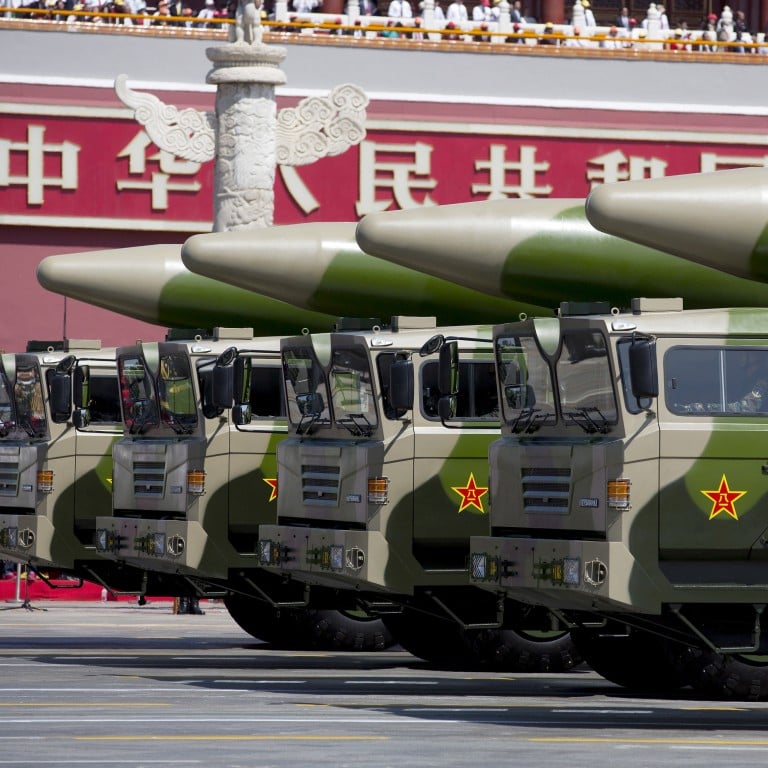
China has tamed the world’s most powerful explosive, military scientists say
- New synthesising method can give five-fold stability boost to CL-20, the deadliest non-nuclear explosive in existence, Chinese research team says
- According to 2021 US study commissioned by Pentagon, only China has CL-20 mass production capacity and has used it in some of its newest weapons
The breakthrough could speed up the large-scale application of the explosive in battle, making Chinese weapons far superior in terms of destructive power, according to the scientists.
CL-20 is the most deadly non-nuclear explosive in existence. When detonated, it can produce destructive shock waves with blast pressures many times higher than other common explosives like TNT and RDX.
The mass production of CL-20 is extremely difficult. China is the only country so far to possess such industrial capability and has used the explosive in some of its newest weapons, according to a US Energetics Technology Centre study commissioned by the Pentagon in 2021.
But the use of CL-20 is still limited due to its sensitivity to shock, according to the Chinese team led by explosive scientist Guo Changping from the Sichuan Military and Civilian Co-Innovation Centre for New Energetic Materials.
Guo and his colleagues developed a new nanotechnology that can help synthesise CL-20 composites with ultra-high stability.
In a falling hammer test, the impact sensitivity or “H50 value” of the new CL-20 explosive was 68cm (26.8 inches), much higher than that of the original material at 13cm.
Falling hammer tests involve dropping a weight onto a sample of explosive material from a specified height and measuring whether it detonated. The height at which half of the samples detonate is known as the H50 value and is used as a measure of impact sensitivity.
“CL-20 has a high mechanical sensitivity, which makes it prone to safety accidents during its development, production, storage, transport and use, due to friction and impact. Its safety performance needs to be improved,” Guo’s team said in a peer-reviewed paper published in the Chinese Journal of Explosives and Propellants in April.
“We are seeking a new method to break through the current technology barriers. It will inspire the design and preparation of high-security, high-energy propellants and explosive formulas of the future,” the scientists added.
Too fast nuclear build-up by China would worry neighbours: analysts
China’s CL-20 research is closely linked to its nuclear weapons programme, according to some state media reports in recent years. More powerful explosives can reduce the size of nuclear weapons and allow intercontinental ballistic missiles to travel further.
Professor Yu Yongzhong, an explosive expert who developed detonation devices for China’s nuclear warheads, came up with the idea of using cage-shaped compounds as a new method of researching high-energy explosives.
He proposed changing the “two-dimensional” flat ring structure of explosive materials to a “three-dimensional” cage-like structure, which led to the synthesis of 797#, the world’s first cage structure explosive material in 1979.
In 1994, Yu synthesised the first CL-20 compound in his laboratory and reported the discovery in some Chinese-language journals.
Two years later, a team of US military scientists announced a material with an identical structure, but said that they had discovered it in 1987.
According to John Fischer, lead scientist at the Energetics Technology Centre, the development of CL-20 exceeded every goal laid out for the energetic materials community.
However, despite its 40 per cent increase in power compared to HMX explosives in some applications, CL-20 could not be fielded due to a variety of factors.
The collapse of the Soviet Union had also reduced the urgency for more powerful explosives, and the cost of testing and fielding CL-20 was high. Since there was no requirement for it, the acquisition community had no interest in it.
“We could not get it across the finish line,” Fischer told National Defence magazine last year.
China urged to boost self-reliance in weapons tech to beat Western sanctions
Meanwhile, China invested a lot of research resources for the mass production of CL-20 in factories.
Some experts in the US defence industry say China has already incorporated CL-20 into a number of weapons systems. Such energetic materials can propel warheads longer distances or allow ships and planes to carry more munitions because they can be made smaller and lighter, they warn.
In 2016, Yu’s team at the Beijing Institute of Technology won China’s special award for scientific and technological progress in national defence for their contribution to the mass production of CL-20.
It is China’s highest award in the field of military science and is given to individuals or groups who have made significant contributions to the development of national defence technology.

